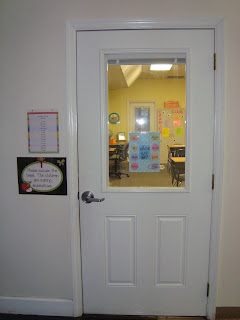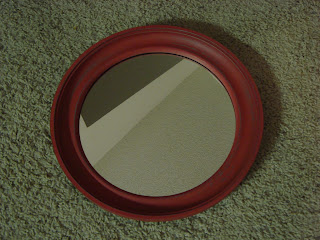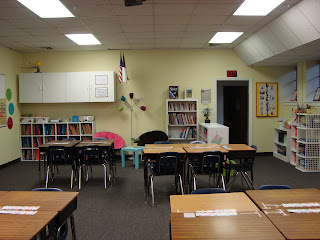Welcome to my 5th grade classroom! In this post, you'll get a complete tour as well as links to my favorite printables. Here's the door to my room with a nice little disclaimer posted to the left:
A closer look and CLICK HERE for the FREE printable: This little sign lets others know where we are. My line leader moves the giant paperclip when we go to special areas:
Just inside my room, to the slight right:
And slight left:
I got the idea for this bulletin board from Pinterest; however, I came up with the phrase. My students' pictures, which I blurred out, are the apps:
The back wall to the left:
And to the right:
I love my subway art in the windows (another Pinterest find):
This birthday board and balloons idea came from Pinterest. I took pictures of my students (again, faces blurred) holding the calendar number of the date of their birth and placed the pictures underneath their birth month.
I attached the birthday balloons to silly straws instead of the giant pixy stix I saw on Pinterest. My students are hyper enough on their birthdays so I don't want to give them sugar! Also, I created the "Birthday Bucket" from a Dubble Bubble bubble gum bucket.
Small table that I use for conferencing with students, meeting with small groups, etc.
See the blue mirror?
It looked like this when I bought it from Hobby Lobby:
I've done a few other paint jobs, including this stool: (before)
(After):
Okay, onto the next wall. The door, by the way, connects my classroom to the other 5th grade classroom. (That's not the other room's main door, though.)
Since I got rid of my teacher desk, this metal cabinet holds all my "desk stuff." The present on top is just a decorated box that I put objects in at the beginning of my science units. I pull out the items and give the students a chance to infer what the upcoming unit will be about.
It may not look too neat in this picture, but the inside of this cabinet is actually quite organized. I have labels on all the boxes and know where everything is:
I created this welcome sign through VistaPrint:
I color-code my schedule, gradebook, student handouts, etc. It makes things easier for me.
Here's my little corner:
Yes, those are my college diplomas hanging on the wall. I believe educators should display their diplomas; why should this practice be reserved for doctors, lawyers, or our administration? Teachers are professionals and many, like myself, have worked hard to earn a higher degree. I say, displaying them shows that I accomplished a goal and am qualified to be in the classroom.
Moving on...another Pinterest idea is the Sub Tub. This has everything in it for a substitute teacher including my sub binder, lesson plans, procedures, flashcards, writing prompts, etc. I even include snacks (Chewy bars, peanut butter crackers, cookies) and a pack of gum.
The third wall (to the left):
My homework board, surrounded with various printables. I created the "I'm Done. Now What?" poster via VistaPrint and a couple are from Pinterest.
Finally, this one, I made myself through PowerPoint: (I have my students use hand signals; I never even have to hear, "May I go to the bathroom?"--there's a hand signal for that.)
Third wall (continued): My Promethean board and magnetic dry erase board. I'm planning on painting the black stool soon so it'll be colorful like the blue one...
Another VistaPrint creation of mine--I made this on a car door magnet and just slapped it on my board:
The circles are called Dry Erase Wall Art by the Board Dudes. You can find these at Staples; they adhere to the wall and come off clean. Love!
Finally, the fourth wall:
My reading area (the table was hot pink until I painted it blue):
Brownie Points (from Pinterest) are awarded to my class whenever they receive a compliment from another teacher. Once the pan is full, I'll bring in real brownies for the class to enjoy!
Thanks for checking out my classroom!
Other Credits:
www.caffeinatedconclusions.blogspot.com
www.mrsestblog.blogspot.com
www.technologyrocksseriously.com
























































